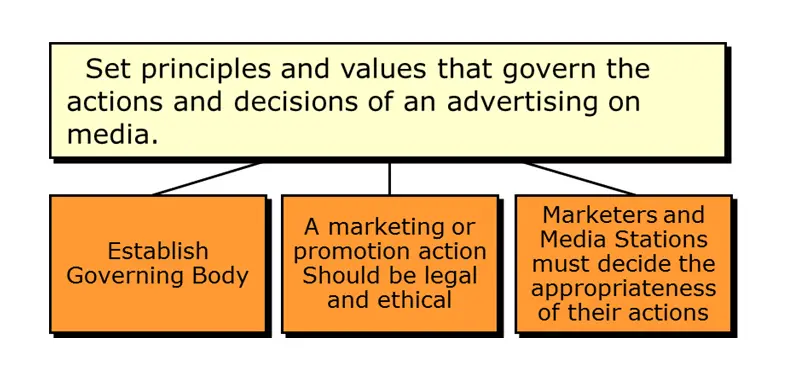The “Marketing Mix” is a term that was introduced in the mid 20th century by the American Marketing Association (AMA), which describes marketing as being composed of four elements: product, placement, price and promotion. The term of promotion reveals a wider area including marketing communications.
Prior to the emergence of integrated marketing communications ( IMC) during the 1990s, mass communications, the practice of relaying information to large segments of the population through television, radio, and other media-dominated marketing. Marketing was a one-way feed. Advertisers broadcasted their offerings and value propositions with little regard for the diverse needs, tastes and values of consumers.
A great deal of advertising and marketing communication aims to create positive ideas about a certain brand among the consumers. Customers are more likely to buy a brand that makes a favourable impression on them. Marketing communication avails itself of a range of channels, such as television commercials, printed advertising, personal sales, ICT etc.
Marketing communication is all around us, a domain that we, as consumers, are part of. This represents the biggest challenge: understanding the often unconscious psychological processes that affect every consumer and play such an important role in marketing communication.
Standardization or Adaptation
Still in this 21st-century television continues to be a prevailing media. Due to the increase in the globalization, this world is “shrinking” at a rapid rate. So, companies doing business overseas must find new and innovative ways to communicate their brands to the consumers. Thus, the decision of standardization or adaptation of the advertisements between various nations is of much importance to these companies when competing in the divergent marketing environment.
The purpose of this endeavour is to develop a better understanding of how marketers should communicate to the consumers in line with television standardization.
Television ads can also be used to boost the image of the product by showing the product in motion along with the ability to use colour and sound for constructing a desirable environment surrounding the product. The television commercials, due to the various factors of television such as vision, colour, sound and motion are very crucial in presenting the message. Moreover, the study of Brassington and Pettitt (2000) showed that motion ads are considered superior for the generation of emotional appeals which is also a factor for the concentration of this article towards television commercials.
The international advertising strategic decision of the standardization or adoption of television and at an international level resides mainly on the manager and his manipulations towards the promotional mix elements. People who support standardization argue by saying that the current trend in the marketing world is of creating the products and marketing them in the same way in all the nations without considering the differences in the various cultures. But when the manager sees a much higher level of differences in the lifestyles as well as economies of the target market population and renders a higher level of adaption instead of going for the standardization. On the other hand, supporters of standardization justify themselves by saying that using the same ads in the overseas markets would help them to achieve lower costs as well as establish a corporate image on a global level.
Again the people in support of adaptation say that this won’t help them in entrenching themselves into the local markets. It is significant that several international ads telecasted in local channels are annihilating core cultural values and disobedience with Television Standardization.
Women and Child Advertising
Advertising to children is a sensitive and an emotionally-charged issue because children can be easily influenced and they like to experiment with new things. The proliferation of products, advertising, promotions and media targeted on children is of concern to lawmakers, the industry and the general public. Either Standardization or Adoption of children’s advertising is under attack because it is perceived as “making kids want what they don’t need” and puts pressure on parents to respond to those needs. More recently, advertising is accused of being a factor in causing children’s obesity. While there are no more regulations in the effect of advertising malpractices, there is no public outcry also in the county. The roles of females have greatly domesticated in popular culture, especially in advertisements. Many advertisements contain women in roles such as cooks, maids, babysitters, as well as sex objects in order to sell the product. Sexism towards women in advertising has always been an issue in the Asian society.
In the beginning, advertisements were once shown to sell a product, however, as years pass, advertisements began to objectify women and began to use women as a way to sell products. Will these roles stop putting women in such domesticating roles, or will women continue to be the subject of products? Looking at the trends of advertisements, women continue to be one of the main sexism objects for a product.
The nations will vary widely in quality, availability, the cost of marketing, etc. Thus, marketers should thoroughly embody various cultural variables into their ads as it seems to have a great impact on influencing the consumer as well as his buying decision.
Bottom lining this standardization vs. adaptation debate are the factors of economic savings in case of using standardized marketing strategies and the maximum realization of profits in case of adaptation of the strategies so to fit into the local target market. Bradley and Sousa (2005) concluded in their studies that non-regional population is likely to be less reactive to the ads which don’t match to their cultures. Thus, it is mandatory that the marketers to understand the target population’s cultural traits for the successful marketing in other nations.
The products and brands can, for a time, sustain the cultural difference and homogenization, but this is not the case with ads as they are much more dependent on influencing the consumers through the marketing elements which are closely tied to the culture of those consumers. Due to the use of such verbal and visual factors such as the scenes, regional language and models, the ad tends to be effective and hence deriving profits.
Developing Standard for Media Advertising
Advertising is the core source of revenue for newspapers, magazines, television and radio. Therefore imposing conditions for advertising makes them vulnerable in expected annual revenue and it paves the way for instability of the media station.
Advertisers may exert control over the media by biasing editorial content, limiting coverage of certain issues or influencing program content. However, in the opposite, advertisers need the media more than the media need any advertiser. Below mentioned is a suggesting model to govern the unnecessary advertisement on media.
The responsibility in this matter is widely dividing among marketers and media stations to develop the standard to protect the social-cultural values in a country. However, there is no proper institution or authority to control the quality of ads. Hence, it is required to establish a regulatory body in the country.
References
- Brassington, F and Pettitt, S, (2000), Principles of Marketing, Second Edition, Prentice Hall, Harlow
- Sousa, C. M.P. and Bradley, F. (2005) Global markets: does psychic distance matter?, Journal of Strategic Marketing, volume 13, issue 1, pages 43-59


